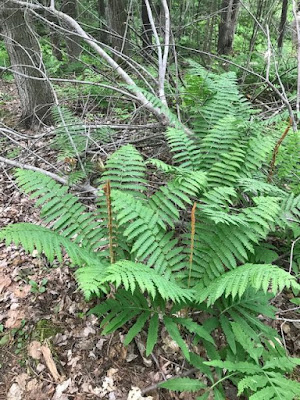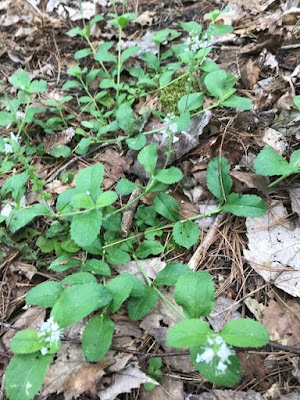 |
| Birch Hollow Photo by Suzanne Currie |
Bracebridge, Ontario, in the beautiful heartland of the District of Muskoka, was, in my day, the host of some very vicious winters. Even by local standards as called by the full fledged oldtimers who could give exact dates to those damning cold snaps and the great blizzards of the decade or maybe even the century. I just knew that when our family, being of the variety of urban refugees similar to the influx of former city dwellers today, the winter of 1965 was much more severe that we Curries had bargained for, when we loaded up the ratty old Vauxhall sedan in uptown Burlington, Ontario. My lumber-manager father had taken a job from an old friend in Bracebridge, which happened to be with one of the most historic timber companies in the District, known as Shier's Lumber. It was the case Ed was needed well before the busy summer season, and for us, it meant relocating north in February when winter was still bellowing and we found out our near treadless tires were no match for icy roads. Before we could slide off the road we got a flat tire, and nearly hit the rocks at the side of the road. Ed was a pretty good driver so I guess he saved our lives that day. The Vauxhall was no match for Muskoka rock.
My dad luckily had a fully inflated spare, and at the side of the two lane highway 11, he managed to change the tire although he got frost bitten fingers. He didn't own a pair of gloves for whatever reason. He had served as a sailor in the famous North Atlantic Squadron, and he claimed his skin had pretty much turned to leather anyway.
When we finally arrived within a bridge's span away from the main street of town, known as Manitoba Street, my mother gave a loud sigh, before she made the profound but short observation, that we had just then arrived in "Sleepy Hollow." A reference I understood from a book about a Headless Horseman who reeks havoc on a small Hudson River Valley hamlet known as "Sleepy Hollow." I knew the picture book at our school library in Burlington, and I liked it even more when I watched the Walt Disney cartoon on the same general theme. But what I didn't know then, at ten and a half years old, was that by time I was working at my first writing job, for the local press, ten years later, the Sleepy Hollow reference my mother offered, would become somewhat prophetic, such that it would be my ongoing and unyielding obsession to the present, being at time of this writing, June 2021.
What my mother didn't know about her new hometown, other than it appeared "Sleepy" but not really a "Hollow" as we crossed the famous Silver Bridge spanning the cataract of the Bracebridge Falls of the North Branch of the Muskoka River, was that her son would one day write a book about the offhand reference, published as a simply bound text in 2000. What occurred by a wild infusion of serendipity, and a lot of other happenstance situations, was the slowly acquired knowledge that there was a surprising truth to what my mother had casually stated on our first crossing of that famous bridge.
It's what I would come to learn, in part, when I was researching town history for a high school essay one year, as referenced in a local chronicle, indicating that the 1860's hamlet had been named "Bracebridge," after a book written by American Author, Washington Irving. I didn't really pay much attention to this at the time, because the theme of the essay wasn't really about the naming of the community, but rather, how the pioneer period from the late 1850's commenced and developed to the early 1870's. But it stuck in my mind, this reference to Washington Irving, because something told me, or rather influenced me ever so subtly, that it would be a connection to explore at some later date. You see I was planning to be a writer of historical stuff after all the schooling was over some years down the road. In the meantime, I kept finding these minor references to the naming of town, and my mother, until the final few weeks of her life, always called Bracebridge "Sleepy Hollow." But before she died, however, she did come to understand the strange connection she had made on that strained winter day, with car troubles and all, when she first laid eyes on the main business corridor of what would become her final destination as far as seeking a worthy hometown.
Merle handled my new book with great care, coming to appreciate page by page, how she had pretty much hit the nail on the proverbial head, when she pronounced our new home as being in "Sleepy Hollow." Of course she was to discover via my research and publication that year, that as Bracebridge had been named after the title of a book, "Bracebridge Hall," afforded to the inaugural post office building in what had formerly been known as "North Falls," she was surprised to find out that it had been written by the same author as the "Legend of Sleepy Hollow." The author, Washington Irving, had written about this wee village near the Hudson River, in New York, in his first major work, "The Sketch Book," in about 1819. This is the book that also introduced Squire Bracebridge, and the famous "Bracebridge Hall" estate in England, that Irving profiled in numerous short stories, initially about Christmas celebrations, as witnessed by his character traveller / voyeur, Geoffrey Crayon Esq., which would be added-to in the second book of two on the same theme, "Bracebridge Hall," published in 1822. This time Mr. Crayon was visiting to attend a wedding of a Bracebridge family member, at the same manor house where he had attended the previous Christmas festivities as a charitable offer to a weary traveller extended by a family member dining at a distant roadhouse.
The story and parallels fascinated me throughout the late 1990's leading up to the publication of this modest history, and ever since, I have tried and failed to seriously turn-on the movers and shakers of present day Bracebridge, to embrace the work and provenance of this internationally revered author, who also by the way, penned the well known tale "Rip Van Winkle." I was once told that when the Postal Authority circa August 1864 opted to borrow the name of a book he was allegedly reading at the time a decision on a name had to be made, the citizenry never truly accepted the loss of the initial name of the hamlet, being "North Falls." First of all, Bracebridge is a much better name than North Falls, and has served the community well ever since it was inked by the then Post Office Authority, William Dawson LeSueur, who had the responsibility of naming new postal offices in this part of Canada. LeSueur, it should also be known, was an accomplished historian and literary critic of considerable acclaim, during his off-hours, and would never have been casual in the selection of names for these post office installations. Most of the time the post office title became the official name of the hamlet in question. LeSueur meant the name to be an initial compliment of literary provenance to the citizenry who would carry the name into the future, but most at the time didn't know who Washington Irving was, or what Sleepy Hollow represented as a soon to be classic story. It was an oversight by LeSueur, that he didn't offer a more detailed explanation of Irving's connection, before he died in the 1920's, after a huge number of literary accomplishments, and historical firsts. He was a storied Canadian on his own credits, and he gave the town of Bracebridge a bankable provenance that unfortunately has never been fully exploited.
My mother had no idea that her somewhat prophetic reference to Bracebridge, as being a parallel to "Sleepy Hollow," was rooted in pioneer period actuality. And she never once used "Sleepy Hollow" in a sarcastic or derogatory way, as she very much came to adore the place where she would live happily with my father well into this new century, and pass away only a few blocks away from where we had arrived first, on that long, hard, frustrating day in February 1965. It was her concept you see, of a very charming and inspiring small town in the midst of a most beautiful lakeland. I have always concurred with this assessment. And by good fortune, I married into a true pioneer family, from Watt Township, in the present Township of Muskoka Lakes, in the autumn of 1983; when I shared wedding vows with Suzanne Stripp, a descendent of the pioneer Shea and Veitch families, who had original homestead acreage in and around Three Mile Lake. It was my opinion of a full circle relationship with Muskoka history, of which Suzanne and I even today, a fully and completely immersed as historians and regional antique dealers.





No comments:
Post a Comment